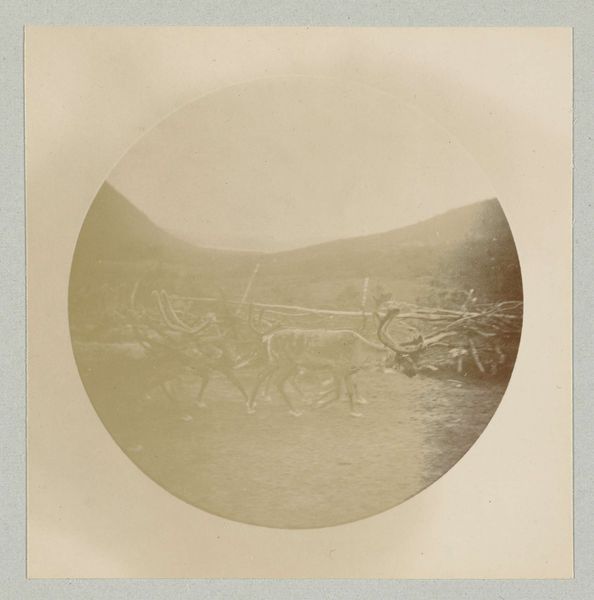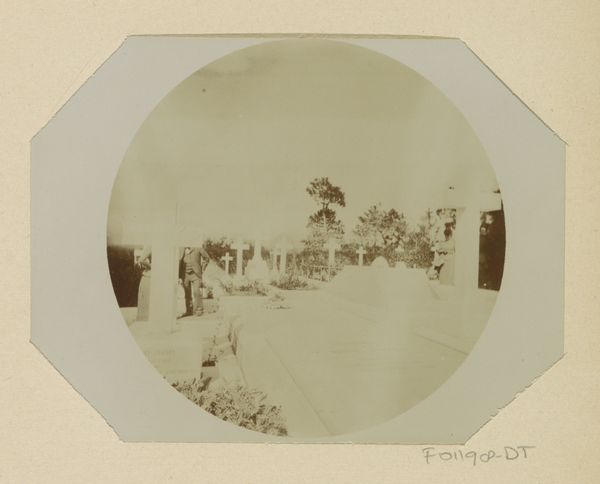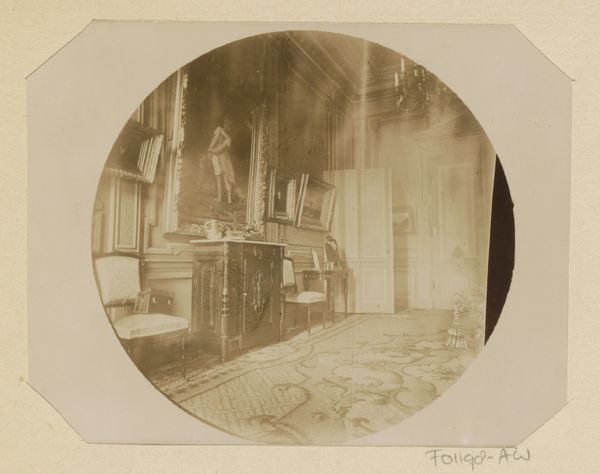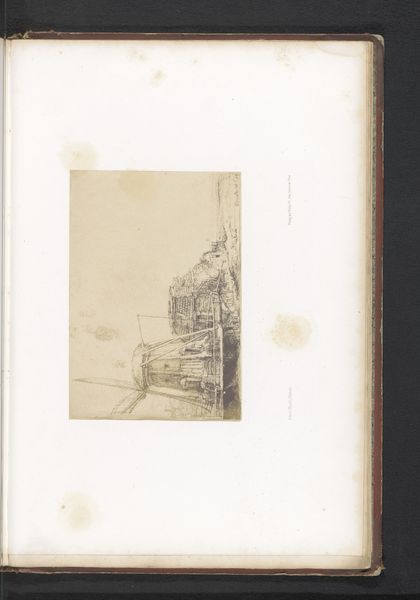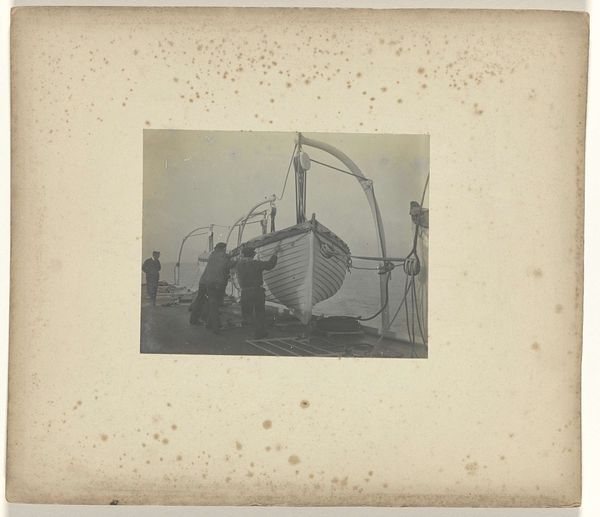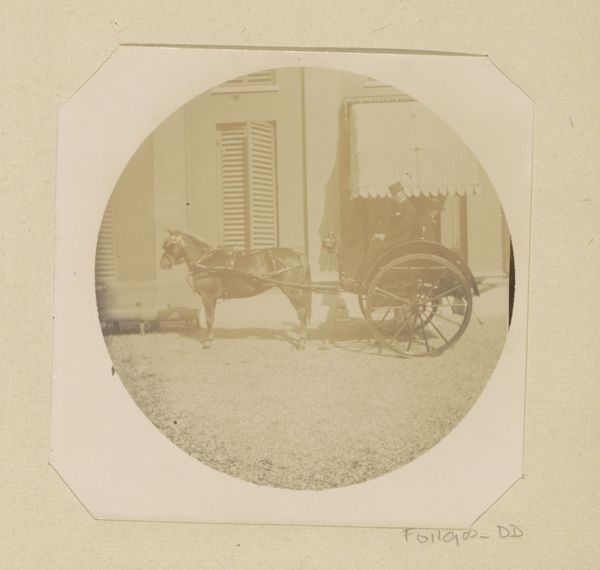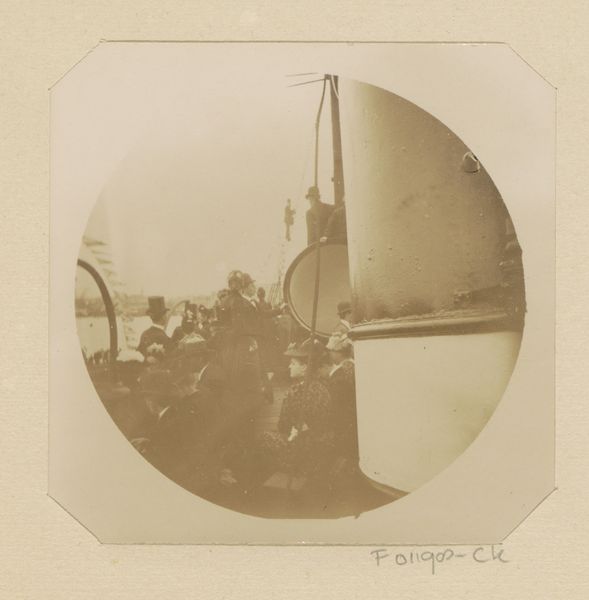
photography, gelatin-silver-print
#
portrait
#
16_19th-century
#
photography
#
gelatin-silver-print
#
genre-painting
#
realism
Dimensions: height 72 mm, width 72 mm, height 314 mm, width 450 mm
Copyright: Rijks Museum: Open Domain
Curator: Looking at this gelatin silver print, dating back to 1889, one immediately senses a particular mood. There’s a soft, almost hazy quality to the image that evokes a strong sense of the past. Editor: Indeed. The circular vignette adds to that dreamlike quality, framing the scene like a memory. This is “Gezelschap aan boord van radarschip de Hohenzollern,” by Paul Gussfeldt. It depicts a group on board the Hohenzollern, which was a German imperial yacht. It’s fascinating how it freezes a moment in time, encapsulating a particular social context and historical moment. Curator: What stands out for me is the texture visible in the image - from the twisted rope to the polished wood. Thinking about the labor and skill required to construct both the ship and then capture it, utilizing new photographic technology of the time is important. The materials tell a story of both industrial advancement and artistic process. Editor: Absolutely, and if we consider the figures themselves, the image reveals the social hierarchy of the time, from the officers to what appear to be lower-ranking crew members, all caught in a carefully staged tableau. It's difficult to ignore the colonial ambitions represented here, with a ship like the Hohenzollern acting as a symbol of power. How are we complicit, in viewing it now? Curator: It really is the meticulous detail afforded by this medium that holds my gaze. Silver gelatin printing enabled much greater image clarity than previous processes and that had a dramatic impact on how photographs could document objects and sites, it helped spread photography outside the studio. Editor: Thinking about that reach and how this image would circulate - the photographic print provided an undeniable visibility to the elite in this moment, further solidifying those systems of control. Images have that power, no? To be used and re-used in the creation and maintenance of societal structures. Curator: True. It highlights the importance of photographs not just as documents of the past but as active participants in its construction. It lets us understand how history and technology were entangled back then. Editor: It offers a chance to dissect, deconstruct and challenge established norms. This piece reveals many aspects of German society at that point in time; seeing photographs like this is crucial for contextualizing colonial legacies. Curator: By exploring its production and context, we see the complex intersection of art, industry and social history. Editor: And we get to engage in an ongoing dialogue with the past.
Comments
No comments
Be the first to comment and join the conversation on the ultimate creative platform.


